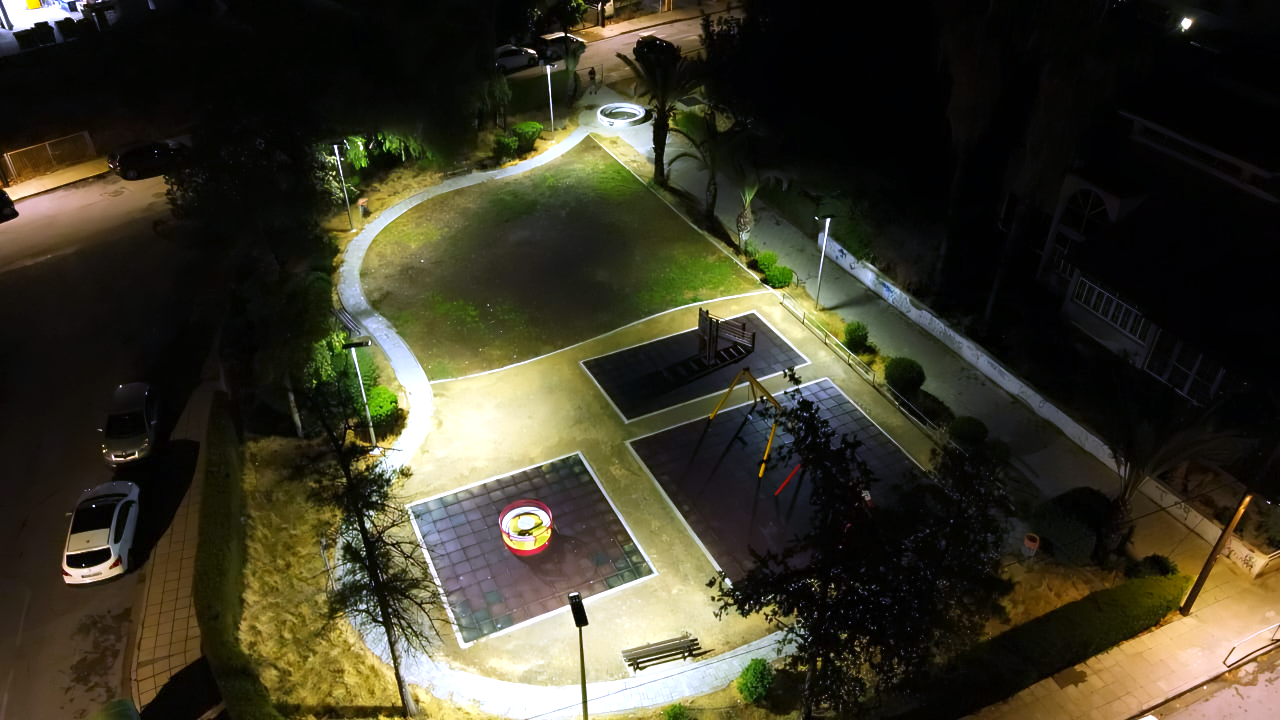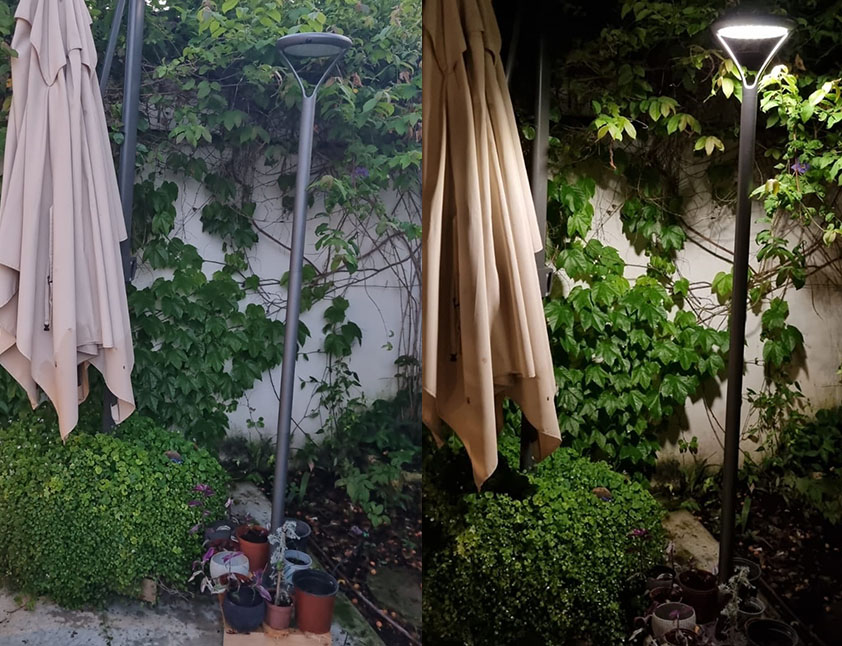Solar street lights can be a great addition to any outdoor lighting system, providing an efficient and sustainable solution for illuminating streets, pathways, parking lots, and other outdoor areas. As with any project requiring equipment installation, however, there may be questions about how long it will take to install solar street lights.
Knowing the time frame of an installation is crucial in making sure that your customers have access to a functioning collection of solar street lights on their property as soon as possible. In this blog post we’ll discuss the factors that influence how fast a set of solar street lights can be installed so you and your customers can plan accordingly!

Why install solar street lights on roads and motorways?
Solar street lights offer numerous benefits, making them an excellent choice for lighting up roads and highways. Here are some reasons why you should consider installing them:1. Energy-1Efficiency: Solar street lights use the sun’s energy, a renewable resource, to provide lighting, reducing the demand on the grid and saving energy.
2. Cost Savings: While the initial investment might be higher than traditional street lights, solar lights can result in significant long-term savings due to reduced energy bills and lower maintenance costs.
3. Environmentally Friendly: By using renewable energy, solar street lights help reduce carbon emissions and contribute to efforts to combat climate change.
4. Easy Installation: Solar street lights are self-contained and don’t require connection to the electric grid, making them easier and less disruptive to install, especially in remote locations or areas where trenching and cabling could be problematic.
5. Low Maintenance: Solar street lights typically require less maintenance than traditional street lights. LED lamps used in solar street lights have a longer lifespan, reducing the need for replacements.
6. Safety and Reliability: Solar street lights are not affected by power outages, ensuring consistent lighting and increased safety on roads and highways. They also function independently of each other, so if one light goes out, it doesn’t affect the others.
7. Smart Features: Many solar street lights come with smart features like motion sensors or light dimming capabilities to save energy when there’s no activity. Some even offer remote control and monitoring, allowing for efficient management and quick response to any issues.
Solar street light installation
Solar street lights are typically standalone systems, meaning they aren’t connected to the power grid. Instead, they generate power independently through an integrated solar panel. Here is a detailed overview of the steps involved in a solar street light installation:
1. Site Inspection and Preparation: Before the installation, the site should be inspected to determine the best location for the lights. Factors to consider include sunlight exposure, height restrictions, and proximity to structures or trees that might cast shadows on the solar panels. Once the locations have been determined, the site can be prepared. This might involve clearing vegetation or other obstructions.
2. Assembling the Solar Street Lights: The solar street lights will need to be assembled before installation. This typically involves attaching the solar panel, LED light, battery, and charge controller to the pole.
3. Digging the Foundation: A hole must be dug for each solar street light. The depth and width of the hole will depend on the size of the light and local soil conditions.
4. Installing the Pole: Once the hole has been dug, the pole can be installed. This usually involves placing the pole in the hole and then filling it with concrete to secure it in place. The pole must be properly aligned to ensure that the solar panel is correctly positioned to capture sunlight.
5. Mounting the Solar Street Light: After the pole is secured and the concrete has dried, the solar street light can be mounted onto the pole. It’s important to make sure the light is securely attached to prevent damage from wind or other environmental factors.
6. Positioning the Solar Panel: The solar panel should be positioned so that it faces the sun for the maximum amount of time each day. This might require adjusting the angle of the panel based on the latitude and seasonal sun position.
7. Testing the Lights: After the lights are installed, they should be tested to ensure they’re working properly. This will involve checking that the lights turn on after sundown and off at sunrise, and that the battery charges during the day.
8. Regular Maintenance: Solar street lights require minimal maintenance after installation. However, it’s still important to regularly check the lights to ensure they’re working correctly, and to clean the solar panels as needed to remove dust or debris.

How long it typically takes for solar street lights to be installed?
The installation time for solar street lights can vary based on several factors, including the type of light, the preparedness of the site, and the experience level of the installers. However, from the search results provided earlier, it’s clear that the process can be quite efficient.
For a single solar street light, the actual assembly and installation process can typically be completed in about 15-20 minutes with a team of two people. This includes mounting the solar light fixture to the pole and securing the pole in the ground.
However, other aspects of the installation process can add to this time. For example, site preparation such as clearing the area or digging the hole for the pole can take additional time. Moreover, after installation, proper checks need to be made to ensure the solar panel is correctly oriented for maximum sunlight exposure, and that the lighting system is functioning correctly.
While the actual installation of a single light might be completed in under an hour, the complete process including preparation and post-installation checks could take a few hours. For larger installations involving multiple lights, the total time will naturally increase, potentially requiring several days to complete.
Tips for ensuring that your solar street lights are installed quickly and correctly
Installing solar street lights efficiently and correctly requires careful planning and execution. Here are some tips to help ensure a successful installation:
1. Planning: Before you begin, make sure you have a detailed plan. This should include the number of lights needed, their placement, and the direction of sunlight throughout the day. A well-thought-out plan will streamline the installation process and ensure the maximum efficiency of the lights.
2. Use Experienced Installers: If possible, hire experienced professionals for the installation. They’ll know the best practices for installing solar street lights quickly and correctly, avoiding common mistakes that could slow down the process or affect the performance of the lights.
3. Prepare the Site: Make sure the site is ready for installation. This might involve clearing vegetation, leveling the ground, or marking the locations for the poles. A well-prepared site can significantly speed up the installation process.
4. Follow Manufacturer Instructions: Each model of solar street light might have specific installation instructions. Always follow these closely to ensure the lights are installed correctly and work as intended.
5. Check Components Before Installation: Before installation, check all components to make sure they’re in good working order. This includes solar panels, batteries, LED lamps, and any other parts. Checking these beforehand can prevent delays caused by faulty equipment.
6. Position Solar Panels Correctly: Make sure the solar panels are positioned to receive maximum sunlight. This usually means facing them south in the northern hemisphere, and north in the southern hemisphere. The angle might also need to be adjusted depending on your latitude and the time of year.
7. Test Lights After Installation: After the lights are installed, test them to make sure they’re working correctly. This should include checking that they turn on at dusk, turn off at dawn and that the battery charges during the day.

SRESKY Solar Street Lights
Get in touch if you’re ready to begin implementing SRESKY solar street lighting solutions. Contact us today to begin your consultation and discover the numerous time and money-saving benefits our systems can offer you!
Table of Contents